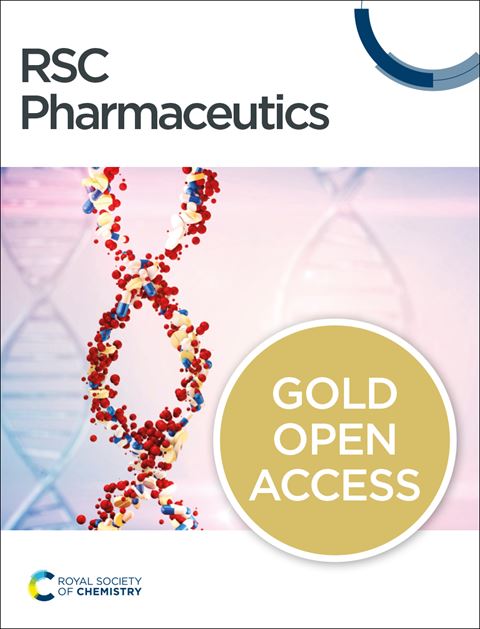
RSC Pharmaceutics has published its first articles. To celebrate this, we asked the authors to discuss their work in some more detail.
In this edition, we hear from Scott Mitchell about their study titled Acid- and base-resistant antimicrobial hydrogels based on polyoxometalates and chitosan.
“Only a few decades ago, antimicrobial resistance (AMR) was largely confined to hospitals and long-term care facilities, but over the last decade it has emerged as a serious global threat to public health. Furthermore, invasive fungal infections kill more than 1.7 million and affect over a billion people each year; however, their devastating impact on human health is not yet widely appreciated and is frequently neglected by public health authorities. In our group, we’ve used the naturally occurring polymer chitosan (CS) in combination with molecular polyoxometalates (POMs) to produce hybrid micro- and nano-capsules. Our hypothesis was that such nanostructured hybrid hydrogel materials could possess surface-active biocidal activity through additive and synergic effects. A series of pH resistance assays concluded that macroscopic hybrid hydrogels made from POMs and chitosan maintained their structural integrity after prolonged contact with both acidic and basic pH and that their potent surface-active antibiofilm properties against model bacterial strains (Gram-positive Bacillus subtilis and Gram-negative Escherichia coli) and airborne environmental moulds (Aspergillus niger and Cladosporium cladosporioides). Furthermore, the antimicrobial activity of the hydrogels could be enhanced through the inclusion of naturally occurring antimicrobial agents such as eugenol and cinnamaldehyde into the polymeric matrix.”
“Although we anticipated some form of antifungal activity, we didn’t anticipate these hybrid POM@CS hydrogels to perform so well in these preliminary tests against moulds. So, modulating this synergistic activity and improving the specificity towards certain strains is something that we’re really excited about.”
“The most challenging aspect was probably related to the transfer of synthetic procedures used to make the materials from one researcher to another. The project was initiated by Isabel Franco (a doctoral researcher) and Andrés Seral (a postdoctoral researcher), both of whom found positions in industry and academia after their contracts ended. This meant they had to transfer the synthetic protocols to Callum McWilliams (an Erasmus student from University of Glasgow) who completed the work during his research project in Zaragoza. Although it wasn’t an ideal scenario, we now know that the synthetic protocols are highly reproducible from one person to another and that’s definitely a positive outcome.”
“Ultimately, we hope that such synergic approaches could help to prevent the appearance of resistances. These hydrogels could easily be employed in health settings, as wound healing patches or poultices. However, there are many other instances where microbial colonization must be treated or avoided and where the appearance of resistances is troubling, e.g., biofilm build-up and blockages in water purification systems or microbiologically-influenced corrosion of engineered structures.”
Want to know more about their work? Read the full paper here!

Acid- and base-resistant antimicrobial hydrogels based on polyoxometalates and chitosan
Callum McWilliams, Isabel Franco-Castillo, Andrés Seral Ascaso, Sonia García-Embid, Mariella Malefioudaki, Johann G. Meier, Rafael Martín-Rapún and Scott G. Mitchell
RSC Pharm. 2024, Advance Article, DOI: 10.1039/D4PM00062E
 |
RSC Pharmaceutics provides researchers with a platform to publish research in pharmaceutics and advance this field. We are interested in any submission that shares new scientific findings across chemistry, materials science, biomedical sciences, pharmaceutics and drug delivery.
|

